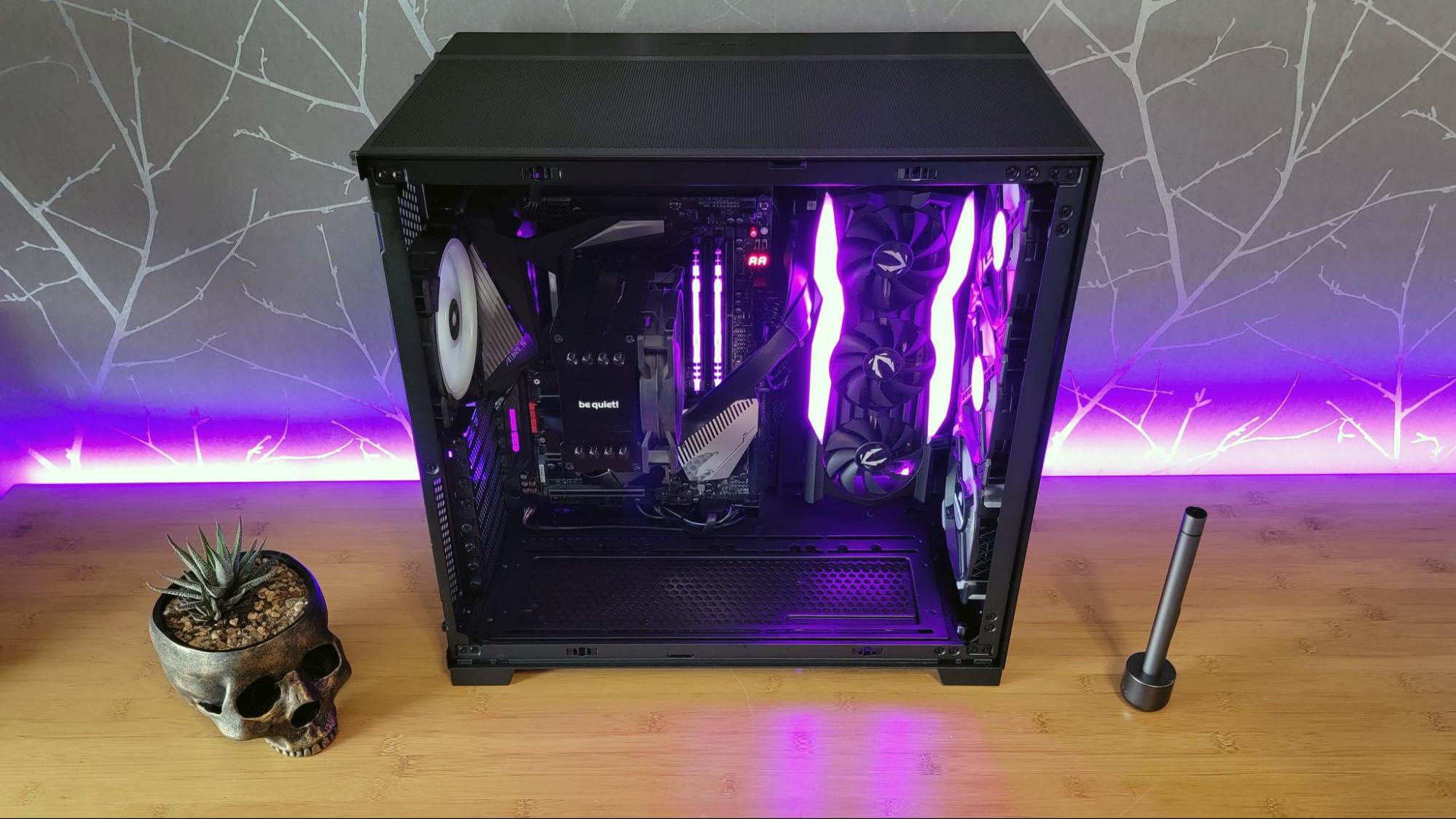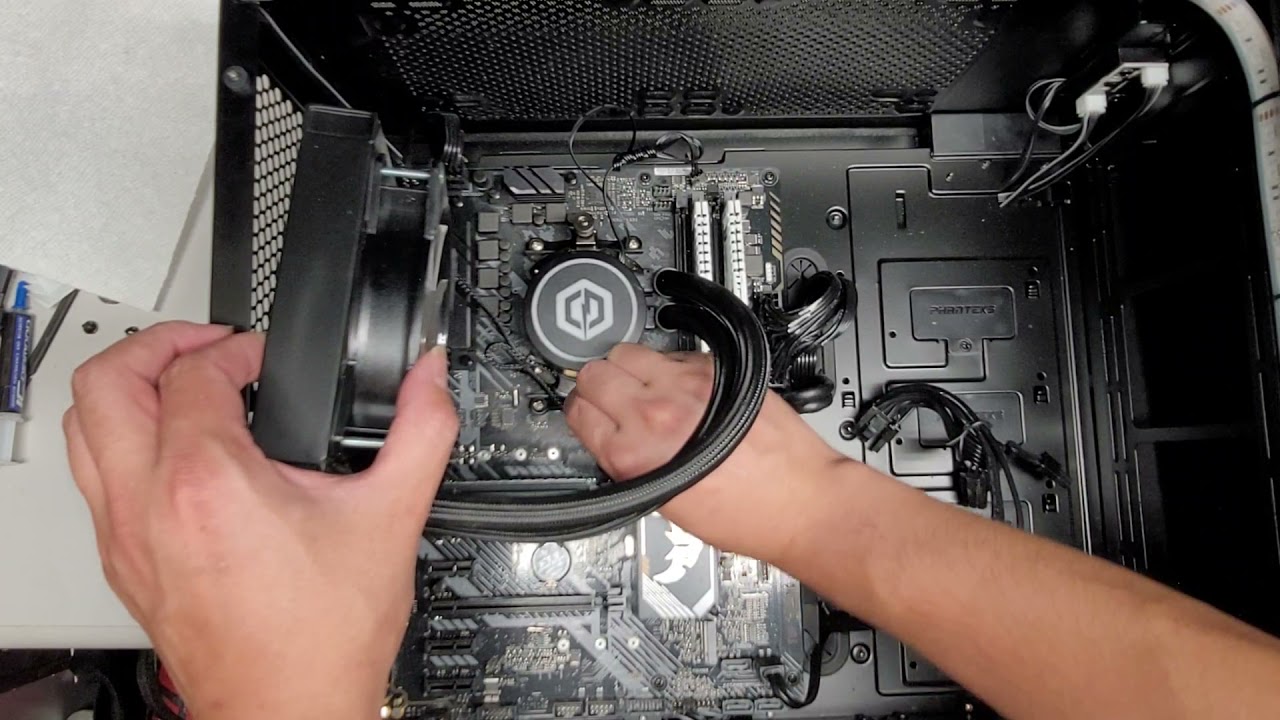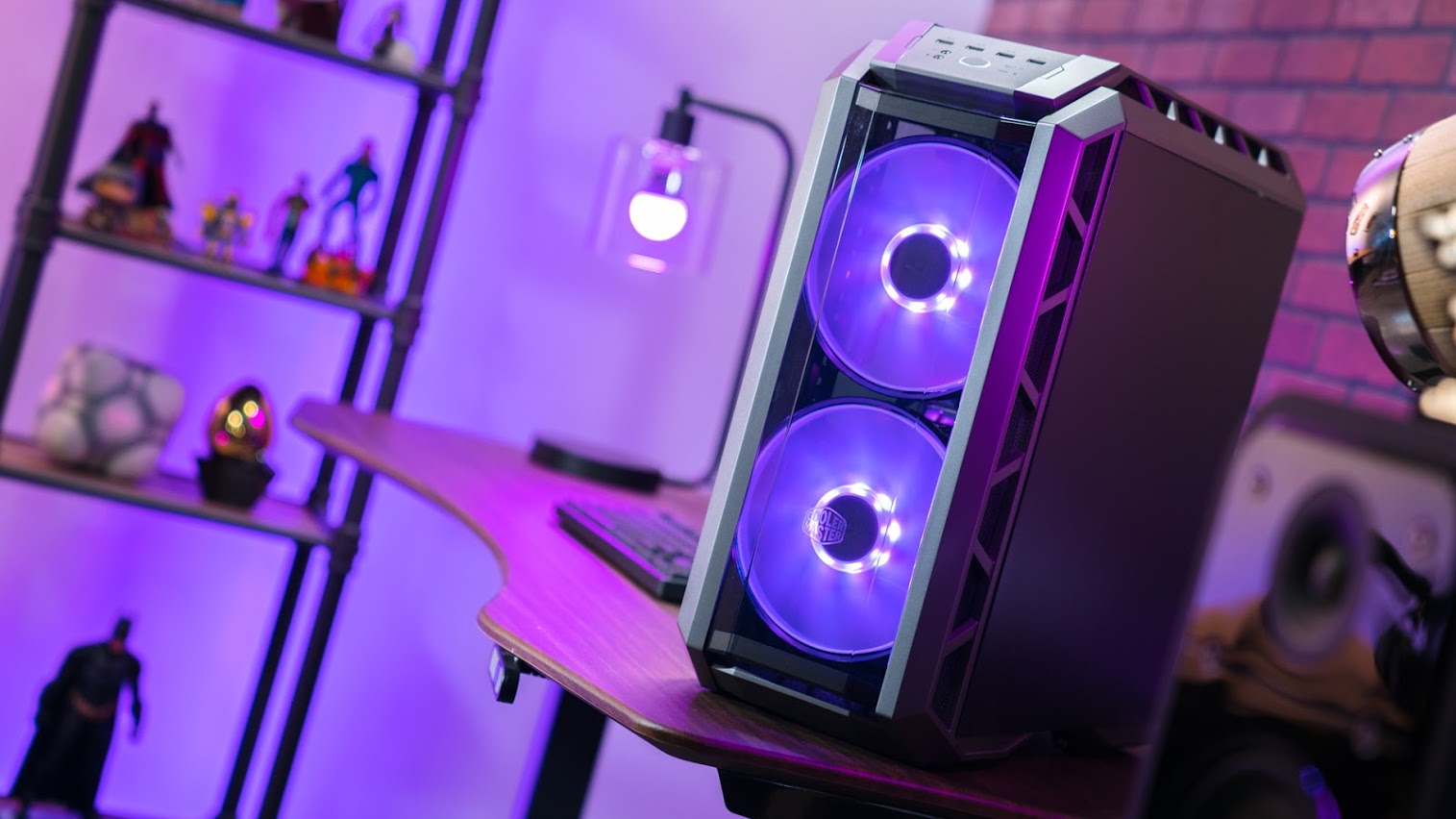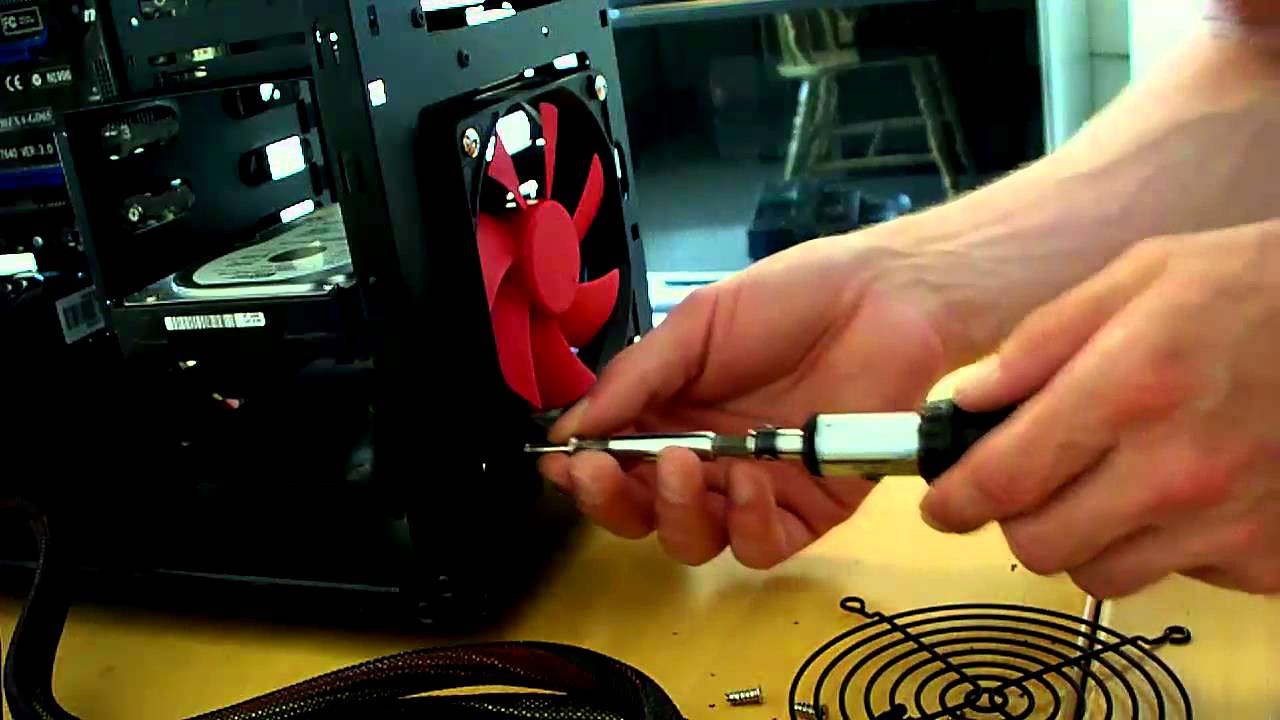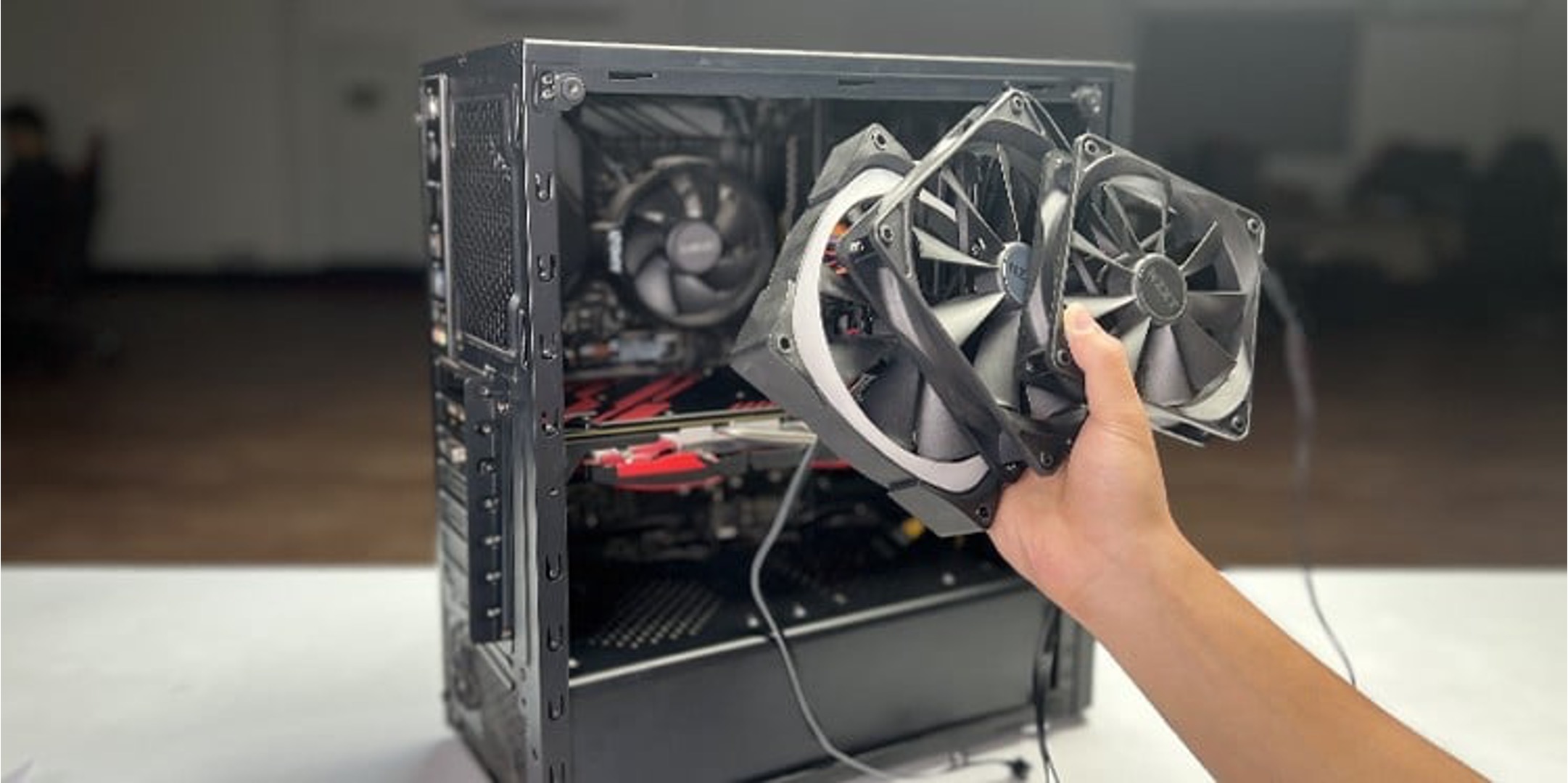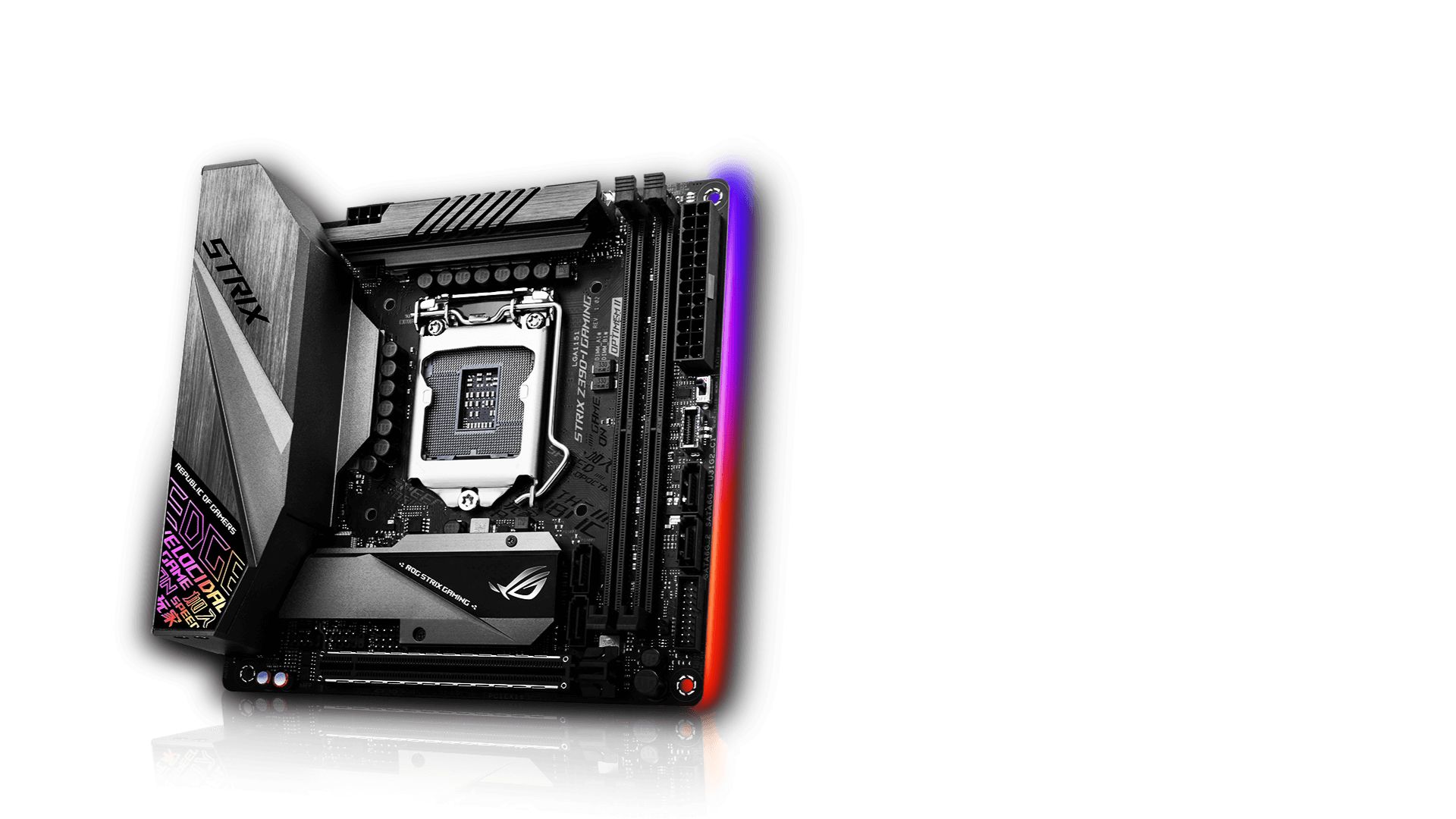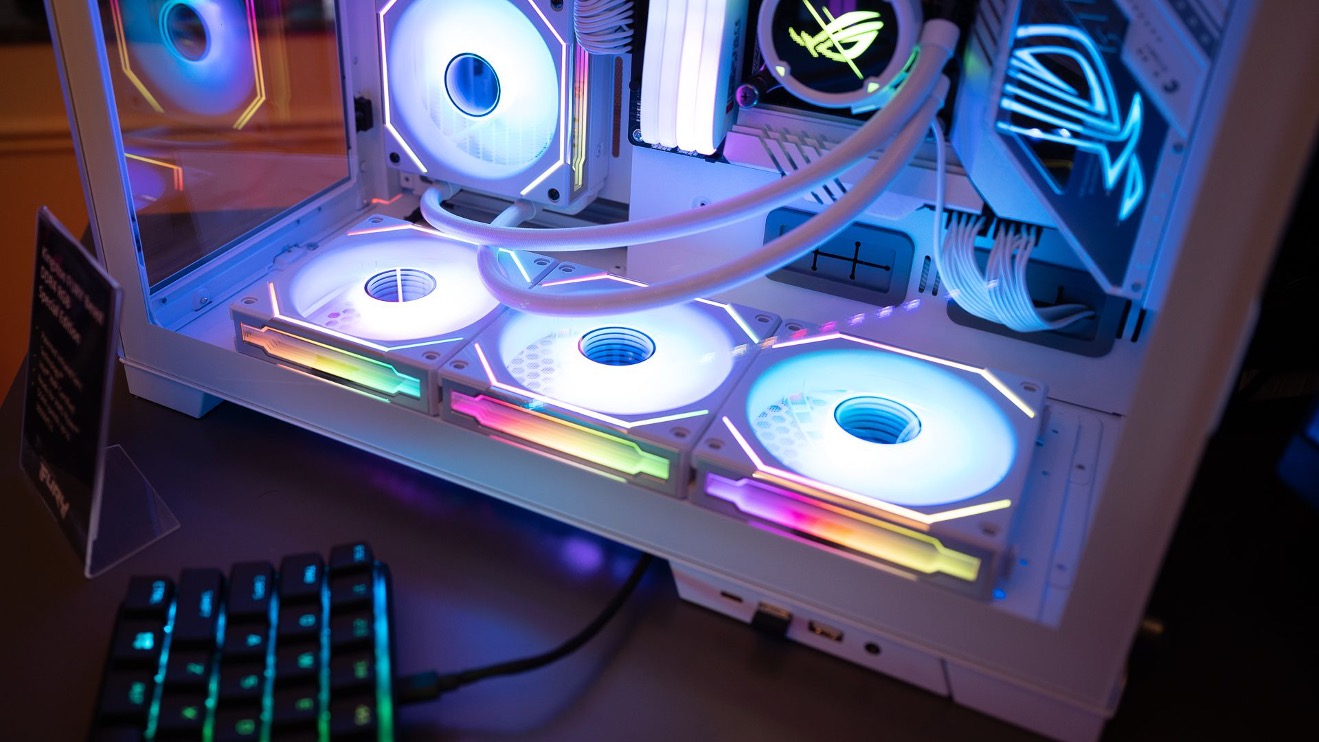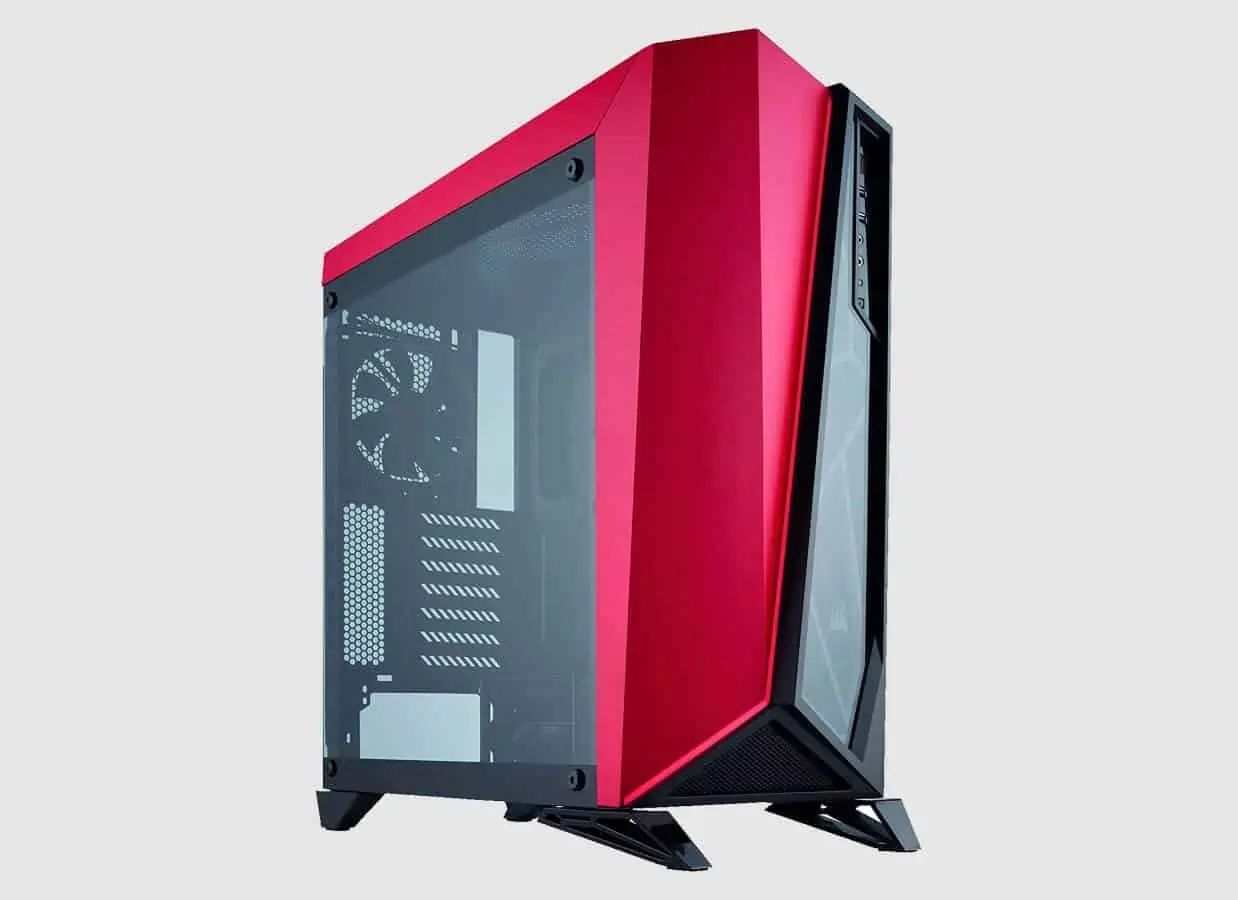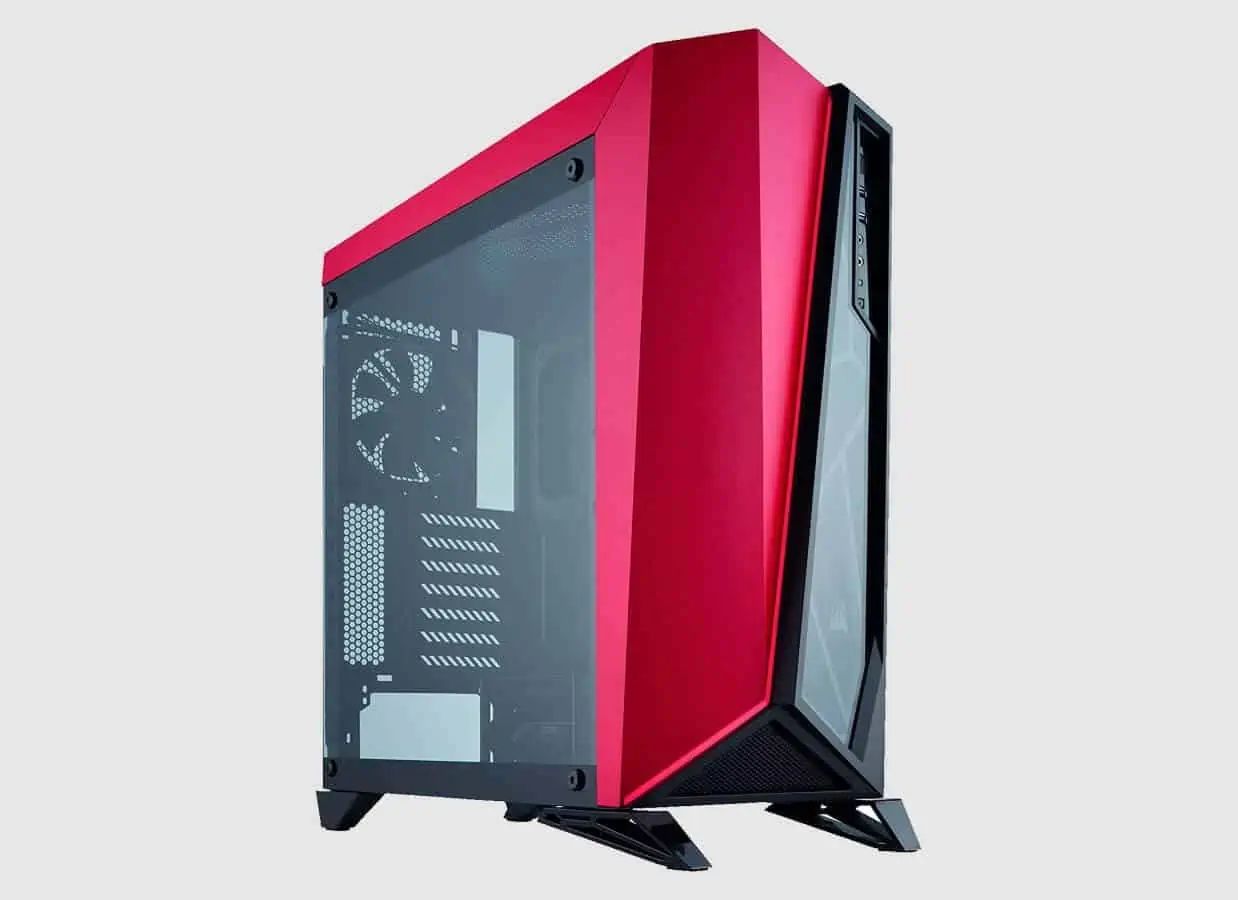Introduction
A PC case fan plays a crucial role in maintaining the optimal temperature of a computer system. It helps in dissipating heat generated by various internal components, such as the processor and graphics card. This ensures that the system operates efficiently and prevents damage caused by overheating.
In the world of PCs, there are two main types of case fans – front fans and back fans. Both have their unique functions and contribute to the overall cooling performance. However, the question arises: which fan is more important? Should you prioritize the front case fan or the back case fan? In this article, we will delve into this debate and explore the differences, advantages, and disadvantages of each type in order to determine their relative significance in cooling a PC system.
Before we dive into the specifics, let’s briefly understand what a PC case fan is. Essentially, a case fan is a small device that is mounted inside the computer case. It consists of blades that rotate at high speed, generating airflow to remove hot air from the system and draw in cool air.
The importance of case fans cannot be overstated. When a computer is under heavy load, such as when running resource-intensive applications or gaming, the internal components generate a significant amount of heat. Without proper cooling mechanisms, this heat can build up and lead to decreased performance, system instability, and even hardware failure. Therefore, having efficient case fans is essential for maintaining stable and reliable PC performance over extended periods of usage.
What is a PC case fan?
A PC case fan, as the name suggests, is a fan specifically designed to be installed inside a computer case. It is responsible for providing airflow and cooling to the components housed within the case. These components, such as the CPU, GPU, and RAM, produce heat while in operation. Without proper cooling, this heat can lead to performance issues and potentially cause damage to the components.
Case fans come in various sizes, usually measured in millimeters (mm). The most common sizes are 80mm, 120mm, and 140mm, although larger fans up to 200mm are also available for larger cases. The size of the fan determines its airflow capacity, with larger fans generally able to move more air with lower noise levels.
PC case fans are typically powered by the computer’s power supply unit (PSU) through a 3- or 4-pin connector, or they can be connected directly to the motherboard’s fan headers. The fan speed is usually adjustable, either manually through a fan controller or automatically by the motherboard’s BIOS or software.
The primary function of a case fan is to expel hot air generated by the internal components and draw in cooler air from the surroundings. The fan blades rotate rapidly, creating airflow that helps dissipate the heat. By removing hot air and replacing it with cooler air, case fans prevent components from overheating and ensure stable operation.
In addition to cooling the internal components, case fans also contribute to the overall airflow within the computer case. They help maintain positive air pressure inside the case, which can prevent the buildup of dust and improve overall system cooling efficiency.
Modern case fans often incorporate advanced features such as RGB lighting for aesthetics and can be used in conjunction with software to monitor temperature and adjust fan speeds accordingly. Some high-performance fans also utilize more efficient bearing types, such as ball bearings or fluid dynamic bearings, to reduce noise and increase lifespan.
The importance of PC case fans
PC case fans play a critical role in maintaining the overall temperature and stability of a computer system. They are vital components that help prevent overheating and ensure efficient performance. Here are some key reasons why PC case fans are important:
- Heat Dissipation: One of the primary functions of case fans is to dissipate the heat generated by internal components such as the CPU and GPU. As these components work harder and generate more heat, case fans help to move hot air away from critical parts and replace it with cooler air. This prevents heat from building up, ensuring that the components operate within safe temperature limits.
- Component Longevity: Excessive heat can have detrimental effects on the lifespan of computer components. When components are consistently exposed to high temperatures, their performance can degrade, leading to errors, crashes, and even permanent damage. By keeping the internal temperature at an optimal level, case fans help extend the lifespan and reliability of components, saving users from costly replacements.
- Improved Stability and Performance: Overheating can cause the system to become unstable, leading to frequent crashes and lower overall performance. By actively cooling the components, case fans maintain a stable operating environment, ensuring that the system can handle demanding tasks without encountering thermal throttling or performance degradation.
- Noise Reduction: Case fans not only contribute to cooling performance but also help reduce noise levels. As components heat up, fans may need to spin faster to maintain proper cooling. By efficiently dissipating heat, case fans can help keep fan speeds lower, resulting in quieter operation. Additionally, some case fans are designed to reduce noise through features such as rubber dampeners and optimized blade designs.
- Positive Air Pressure and Dust Prevention: Case fans can play a crucial role in maintaining positive air pressure within the computer case. Positive air pressure occurs when the intake airflow exceeds the exhaust airflow, limiting the entry of dust and other particles into the case. By preventing dust buildup on components, case fans can help improve overall system stability and maintain optimal cooling performance.
These reasons highlight the essential role that PC case fans play in ensuring the longevity, stability, and performance of a computer system. Without proper cooling, the heat generated by internal components can lead to various issues, including reduced lifespan, decreased performance, and potential hardware failure. Investing in quality case fans and keeping them properly maintained is a crucial step in optimizing the overall performance and durability of a computer system.
Front vs. back case fans: what’s the difference?
When it comes to PC case cooling, two commonly used fan positions are the front and the back. Each position differs in its function and impact on the overall airflow within the computer case. Let’s take a closer look at the differences between front and back case fans:
Front Case Fans: As the name suggests, front case fans are positioned at the front of the computer case. Their primary function is to draw in cool air from outside the case and direct it towards the internal components. This helps to maintain a constant supply of fresh, cool air for effective cooling.
Front case fans are typically located behind the front panel of the case, often hidden from sight. They are designed to intake air and create positive pressure inside the case. This positive pressure helps to prevent dust from entering through unfiltered gaps and openings, as the air is forcefully expelled through these areas.
The main advantage of front case fans is their ability to directly cool components such as the hard drives, SSDs, and the lower part of the motherboard. These components can generate significant heat, particularly during intense disk activity. By providing focused airflow, front case fans help to keep these components within appropriate temperature ranges, ensuring optimal performance and longevity.
Back Case Fans: Unlike front case fans, back case fans are positioned at the rear of the computer case. Their primary function is to exhaust hot air that has been generated by internal components and drive it out of the case. This assists in maintaining a constant flow of cool air through the case.
Back case fans are typically located near the CPU cooler and the rear I/O panel. They serve as an essential component in removing hot air from the case, preventing it from recirculating back into the system. By expelling hot air, back case fans contribute to overall cooling efficiency and heat dissipation.
It is important to note that back case fans do not actively cool specific components like front case fans. Rather, their objective is to eliminate hot air coming from these components and create negative pressure inside the case, allowing fresh, cool air to be pulled in from the front and other intake areas.
Both front and back case fans are crucial for maintaining an effective cooling system. While front case fans focus on providing cool air directly to components, back case fans play a vital role in removing hot air and ensuring proper airflow throughout the system. In combination, these fans work together to achieve optimal cooling performance and a balanced airflow within the computer case.
Understanding positive and negative pressure in PC cases
When it comes to PC case cooling, two terms frequently mentioned are positive pressure and negative pressure. These terms describe the airflow dynamics within a computer case and play a crucial role in maintaining proper cooling. Let’s explore what positive and negative pressure mean in the context of PC cases:
Positive Pressure: Positive pressure refers to a scenario where the intake airflow entering the computer case exceeds the exhaust airflow exiting the case. This results in a higher air pressure inside the case compared to the ambient environment. Positive pressure is typically achieved by having more intake fans, such as front case fans, than exhaust fans.
The benefits of positive pressure include:
- Dust Prevention: Positive pressure helps prevent dust from entering the case through unfiltered gaps and openings. The higher air pressure inside the case forces air to escape through these gaps, reducing the likelihood of dust entering.
- Better Cooling Efficiency: With positive pressure, cool air is pushed into the case, ensuring a constant supply of fresh, cool air for the components. This helps maintain lower temperatures and efficient cooling performance.
Negative Pressure: In contrast, negative pressure occurs when the exhaust airflow exiting the computer case exceeds the intake airflow entering the case. This results in a lower air pressure inside the case compared to the ambient environment. It is usually achieved by having more exhaust fans, such as back case fans or top-mounted fans, than intake fans.
The benefits of negative pressure include:
- Improved Heat Dissipation: Negative pressure ensures a rapid removal of hot air from the case, preventing it from recirculating and causing components to heat up. This helps maintain lower temperatures and efficient cooling performance.
- Flexibility for Custom Cooling: Negative pressure setups provide flexibility for users who want to incorporate custom cooling solutions, such as water cooling systems or aftermarket CPU coolers. The increased exhaust airflow can assist in dissipating the additional heat generated by these components.
Both positive and negative pressure have their advantages and disadvantages, and the choice between them depends on factors such as the case design, component layout, and personal preferences. It is worth noting that some PC enthusiasts prefer to maintain a balanced pressure system, where the intake and exhaust airflow are relatively equal. This approach aims to achieve a balanced distribution of fresh air and efficient heat dissipation throughout the case.
Understanding positive and negative pressure in PC cases is important in planning an effective cooling strategy. Whichever pressure configuration is chosen, it is crucial to maintain adequate airflow and ensure proper cooling for the internal components. Regular maintenance, such as cleaning the filters and removing accumulated dust, is also essential to maximize cooling performance and protect the longevity of the system.
Pros and cons of front case fans
Front case fans play a crucial role in the cooling performance of a PC system. They have several advantages and disadvantages that should be considered when planning the airflow strategy within a computer case. Let’s explore the pros and cons of front case fans:
Pros of front case fans:
- Efficient Cooling: One of the primary advantages of front case fans is their ability to provide efficient cooling for components such as hard drives, SSDs, and the lower part of the motherboard. By drawing in cool air from outside the case, front fans help to maintain low temperatures, preventing heat-related performance issues and component damage.
- Positive Air Pressure: Front case fans contribute to creating positive air pressure inside the computer case. This positive pressure helps to prevent dust from entering through unfiltered gaps and openings by forcing air to escape through these areas. It aids in reducing dust buildup, improving system stability, and minimizing the need for frequent cleaning.
- Improves Overall Cooling Performance: By providing a direct intake of cool air, front case fans enhance the overall cooling performance of the system. When combined with sufficient exhaust fans, they help to maintain a balanced airflow and effective heat dissipation, resulting in lower temperatures and improved system stability.
Cons of front case fans:
- Noisy Operation: Depending on the fan’s design and speed, front case fans can sometimes produce noticeable noise. Higher RPM fans, in particular, may generate more noise as they push more air into the case. However, choosing quality fans and adjusting fan speeds can help minimize noise levels.
- Restriction of Airflow: In some cases, front case fans can create airflow restrictions, especially if the case design limits the size or number of front fan placements. This restriction can reduce overall airflow and impact cooling performance. It is crucial to consider the case design and ensure that the front fans have adequate space and clearance for optimal operation.
- Less Cooling for Components in Other Areas: While front case fans focus on cooling components in their immediate vicinity, they may provide less cooling to components located in other areas of the case, such as the top or rear. Therefore, it is important to distribute fans strategically or consider additional fans to ensure adequate cooling throughout the entire system.
Despite these potential drawbacks, front case fans bring significant benefits to a PC system’s cooling performance. When properly installed and configured, they contribute to efficient cooling, positive air pressure, and improved overall stability. By addressing these cons, such as selecting quieter fans and ensuring proper airflow distribution, the advantages of front case fans can be maximized, resulting in a well-cooled and optimized computer system.
Pros and cons of back case fans
Back case fans are an essential component in maintaining an optimal airflow and cooling performance within a PC system. They offer specific advantages and disadvantages that should be considered when planning the cooling strategy within a computer case. Let’s explore the pros and cons of back case fans:
Pros of back case fans:
- Effective Heat Exhaust: The primary advantage of back case fans is their ability to effectively exhaust hot air generated by internal components. By expelling hot air from the case, back case fans assist in maintaining optimal operating temperatures, preventing overheating, and promoting stable system performance.
- Negative Pressure Efficiency: Back case fans contribute to creating negative pressure inside the computer case. This negative pressure helps facilitate the flow of cool air into the case, as fresh air is drawn in from the front and other intake areas. This efficient airflow ensures that components are supplied with a constant flow of cooler air, promoting effective cooling.
- Flexibility in Cooling Configurations: Back case fans offer flexibility in cooling configurations, allowing users to customize their cooling systems. They can be used in conjunction with other exhaust fans, such as top-mounted or side panel fans, to enhance heat dissipation capabilities in specific areas of the case. This flexibility is particularly beneficial for setups involving high-performance components or additional cooling solutions.
Cons of back case fans:
- Reduced Focus on Specific Components: Unlike front case fans that deliver a direct flow of cool air to specific components, back case fans focus on heat exhaust rather than specific cooling. While they contribute to overall cooling performance, they may not provide the same targeted cooling for components as front case fans. It is important to balance the placement of back case fans with proper airflow to ensure adequate cooling for all components.
- Potential for Dust Accumulation: Back case fans are positioned at the rear exhaust area, which can sometimes result in dust accumulation on the fan and its surroundings. As dust builds up, it can impede the airflow and reduce the effectiveness of the fan. Regular cleaning and maintenance are crucial to prevent dust-related issues and maintain optimal cooling performance.
- Noise Considerations: Depending on the fan type, speed, and quality, back case fans can produce varying levels of noise. Higher RPM fans may generate more noise as they exhaust larger volumes of air. Careful selection of fans, considering noise levels and adjusting fan speeds, can help minimize noise and create a quieter system.
Back case fans play a critical role in efficiently removing hot air from the computer case and maintaining a balanced airflow. While they may have some drawbacks, these can be mitigated through careful fan selection, regular maintenance, and proper configuration. When used in conjunction with other fans, such as front case fans, back case fans contribute to an effective cooling system that promotes stable performance and extends the lifespan of components.
Which fan is most important for cooling performance?
When it comes to determining which fan is most important for cooling performance, it’s essential to consider the overall airflow strategy within the computer case. Both front and back case fans play significant roles in maintaining the optimal temperature of a PC system, and their importance depends on various factors. Let’s explore these factors to understand which fan holds more significance:
Front case fans are crucial for providing a direct intake of cool air into the case. They cool components such as hard drives, SSDs, and the lower part of the motherboard, which can generate substantial heat. By ensuring a constant supply of fresh, cool air, front case fans help in preventing heat-related performance issues and component damage. Additionally, they contribute to creating positive air pressure, which aids in preventing dust accumulation and improving overall system stability. Therefore, front case fans are particularly important for cooling specific components and maintaining overall system health.
On the other hand, back case fans are responsible for efficiently exhausting hot air from the system. They ensure proper airflow within the case, preventing the recirculation of hot air and maintaining lower temperatures for components. Back case fans create negative pressure, facilitating the intake of cool air from the front and other intake areas. This helps promote effective cooling and prevents the buildup of heat that can lead to performance degradation and instability.
Both front and back case fans are vital for maintaining a balanced and efficient cooling system. While front case fans play a more direct role in cooling specific components, back case fans focus on heat exhaust and overall airflow management. The importance of each fan depends on factors such as the case design, component layout, and cooling requirements.
Ultimately, the most important fan for cooling performance is subjective to the specific PC configuration and user requirements. In some cases, front case fans may be more critical when components require focused cooling, while in others, back case fans may assume greater significance to ensure efficient heat dissipation. It is best to assess the system’s needs, consider the number and placement of fans, and create a balanced airflow strategy that utilizes both front and back case fans to achieve optimal cooling performance.
Factors to consider when choosing between front and back case fans
Choosing between front and back case fans requires careful consideration of various factors to ensure an effective cooling strategy. Here are some important factors to keep in mind when deciding between front and back case fans:
- Component Cooling Needs: Assess the cooling requirements of specific components in your system. Consider components such as hard drives, SSDs, and the CPU that may benefit from direct cooling. If certain components generate significant heat, prioritizing front case fans may be advantageous.
- Case Design and Airflow: Evaluate the design of your computer case and its airflow characteristics. Some cases prioritize front intake airflow, while others may have better exhaust capabilities at the back. Choose fans that align with the case design, allowing for optimal airflow and efficient cooling. Additionally, consider the available fan placement options and restrictions in the case.
- Dust Management: Consider the importance of dust management in your cooling strategy. Front case fans, with their ability to create positive air pressure, can help reduce dust buildup inside the case by forcing air out through unfiltered gaps. If dust is a significant concern, prioritize front case fans to create positive pressure and minimize the risk of dust accumulation.
- Noise Levels: Take into account the noise levels of the fans. Front case fans, which focus on direct cooling, may have a higher impact on noise if they need to spin at higher RPMs. Consider fan specifications and choose fans that strike a balance between cooling performance and noise levels, ensuring a quieter system environment.
- Cooling Balance: Strive for a balanced cooling approach by considering both front and back case fans. While front case fans cool specific components, back case fans play a critical role in efficiently exhausting hot air and maintaining overall airflow. A combination of both types of fans, along with other exhaust or intake fans, can achieve a well-balanced cooling system.
- Add-On Cooling Solutions: Assess the need for additional cooling solutions, such as liquid cooling or aftermarket CPU coolers. These solutions may impact the airflow dynamics within the case. Consider whether additional exhaust or intake fans, including back case fans, are necessary to assist in dissipating the extra heat generated by these components.
When choosing between front and back case fans, it is important to consider these factors holistically and evaluate their relevance to your specific system configuration. Striking a balance between component cooling, case design, dust management, noise levels, and overall cooling requirements will help you make an informed decision about the ideal combination of front and back case fans for your PC system.
Conclusion
Choosing between front and back case fans is not a matter of one being more important than the other, but rather understanding their distinct roles in maintaining optimal cooling performance. Both types of fans have their own advantages and play crucial roles in achieving an efficient airflow within a computer case.
Front case fans provide direct cooling to specific components, ensuring adequate airflow and preventing heat-related issues. They contribute to positive air pressure, preventing dust buildup and improving overall system stability. On the other hand, back case fans focus on efficient heat exhaust and facilitate proper airflow management within the case. They create negative pressure, drawing in cool air and preventing hot air recirculation.
When choosing between front and back case fans, several factors should be considered. These include component cooling needs, case design and airflow characteristics, dust management, noise levels, cooling balance, and the presence of additional cooling solutions. By evaluating these factors, you can determine the ideal combination of front and back case fans, as well as any supplementary fans, to ensure an effective cooling strategy for your PC system.
Remember that the choice between front and back case fans may vary depending on your specific system requirements and preferences. It is crucial to strike a balance in airflow distribution, prioritize component cooling needs, and maintain a well-balanced cooling system for optimum performance and longevity of your PC components.
Ultimately, with proper fan selection, placement, and consideration of the factors mentioned, you can create a cooling solution that effectively addresses heat dissipation, maintains stable temperatures, and promotes a reliable and efficient PC system.







